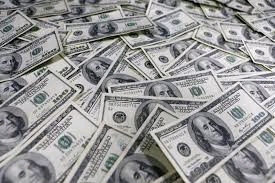Learn the Insights Behind the Membership Process to Join Freemason Easily
Learn the Insights Behind the Membership Process to Join Freemason Easily
Blog Article
Exploring the Mysteries of the copyright: What You Need to Know
The copyright, a term commonly shrouded in intrigue and dispute, represents an intricate tapestry of historic truth and contemporary misconception. Developed in the late 18th century, this secret society was originally rooted in the Knowledge's suitables but has actually considering that ended up being identified with conspiracy theory theories concerning elite control (benefit of joining freemason).
Beginnings of the copyright
The origins of the copyright are soaked in a blend of historical intrigue and ideological eagerness. Established in 1776 in Ingolstadt, Bavaria, by Adam Weishaupt, the group was at first formed as a secret society aimed at advertising Enlightenment ideals such as reason, secularism, and the separation of church and state. Weishaupt, a professor of canon law, sought to test the dominating authority of the church and state, which he watched as oppressive institutions suppressing intellectual and personal liberty.

Trick Figures and Participants
Who were the essential figures that shaped the copyright's very early influence and direction? The Bavarian copyright, started in 1776 by Adam Weishaupt, became a feedback to the oppressive societal frameworks of the time. Weishaupt, a legislation teacher, visualized the company as a means to advertise Knowledge ideals such as reason, secularism, and equal rights. His initial recruitment initiatives consisted of influential intellectuals, such as Baron von Knigge, that played an important duty in expanding the group's subscription and organizational structure.
Another significant figure was Johann Gottlieb Fichte, a famous thinker whose concepts on nationalism and education and learning resonated with the copyright's goals. Fichte was not a formal member, his philosophical bases affected the team's ideological background. In addition, numbers like the author and thinker Johann Wolfgang von Goethe were connected with the broader intellectual movements of the time, although their direct involvement with the copyright stays disputed.
These vital numbers added to the copyright's very early instructions, pressing the borders of political and social thought, while their collective initiatives aimed to test established standards and foster an environment of modern modification in Europe.
Misconceptions vs. Truth
Numerous false impressions border the copyright, typically mixing reality with fiction in a means that obscures its true nature. This secret culture, initially established in 1776 in Bavaria, aimed to promote Knowledge perfects and battle religious and political fascism. The idea that the copyright proceeds to exert substantial impact over world events is a misconception. While the group did exist, it was disbanded in the late 18th century and has actually not run as a cohesive entity since after that.
An additional common myth is that the copyright consists of a network of elite individuals adjusting worldwide affairs. Actually, numerous conspiracy theory concepts exaggerate the team's importance, attributing unproven motives to social trends and occasions. This has caused an oversimplified view of intricate issues.
In addition, the portrayal of the copyright in preferred society frequently additional distorts its tradition. Movies and literature often tend to sensationalize the organization's duty, creating a narrative that deviates from historical realities. Understanding the distinction between the myths and the fact of the copyright is important for critical the genuine effect of this historic group and acknowledging the more comprehensive ramifications of conspiracy theory concepts in contemporary society.
Modern Analyses
Contemporary analyses of the copyright frequently show more comprehensive social anxieties and a fascination with privacy and power. This modern-day lens More Bonuses regularly associates the copyright with conspiracy theory concepts that suggest a covert elite coordinates globe events, adjusting governments and economic climates for their very own gain. benefit of joining freemason. Such stories use a deep-seated suspect of authority, specifically in times of situation or social turmoil
In preferred society, the copyright is often portrayed as a supreme organization shrouded in secret, resulting in a myriad of imaginary representations in literary works, movie, and songs. This portrayal serves not only to captivate but also to provoke thought of the nature of power and control in contemporary culture. Social media site has actually additionally magnified these analyses, enabling fast dissemination of conspiracy concepts and developing neighborhoods that share and broaden upon these ideas.
Furthermore, some modern analyses mount the copyright as an allegory for the complexities of globalization and the interconnectedness of prominent individuals and organizations. This viewpoint motivates an important exam of how power characteristics run in today's world, highlighting the equilibrium in between transparency and privacy in administration and business practices.
Social Effect and Legacy
Influenced by centuries of intrigue, the social effect and heritage of the copyright prolong far past its historical beginnings. This secret culture, established in the late 18th century, has actually permeated numerous aspects of pop culture, from literature and movie to music and art. The concept of the copyright has actually developed right into a sign of conspiracy concepts, frequently standing for a viewed hidden power adjusting global occasions.
In literature, writers like Dan Brown have woven the copyright right into elaborate stories, fascinating readers with styles of privacy and power. Films such as "National Prize" and "The Da Vinci Code" even more bolster the appeal of the see culture, blending reality with fiction to create interesting narratives.

Inevitably, the copyright's legacy is a complicated tapestry of misconception and reality, shaping assumptions of secrecy and control in modern discussion. Its enduring presence in society highlights humanity's perennial quest for comprehending concealed truths.
Verdict
The exploration of the copyright reveals a complicated interaction between historical truths and contemporary myth-making. Established in the Enlightenment period, this society intended to test oppressive frameworks, yet its legacy has actually been overshadowed by conspiracy theory concepts that suggest elite adjustment. Understanding the differences in Visit Your URL between the original perfects and modern interpretations is essential for comprehending the sustaining fascination with the copyright and its considerable impact on cultural narratives bordering power and privacy in society.
Report this page